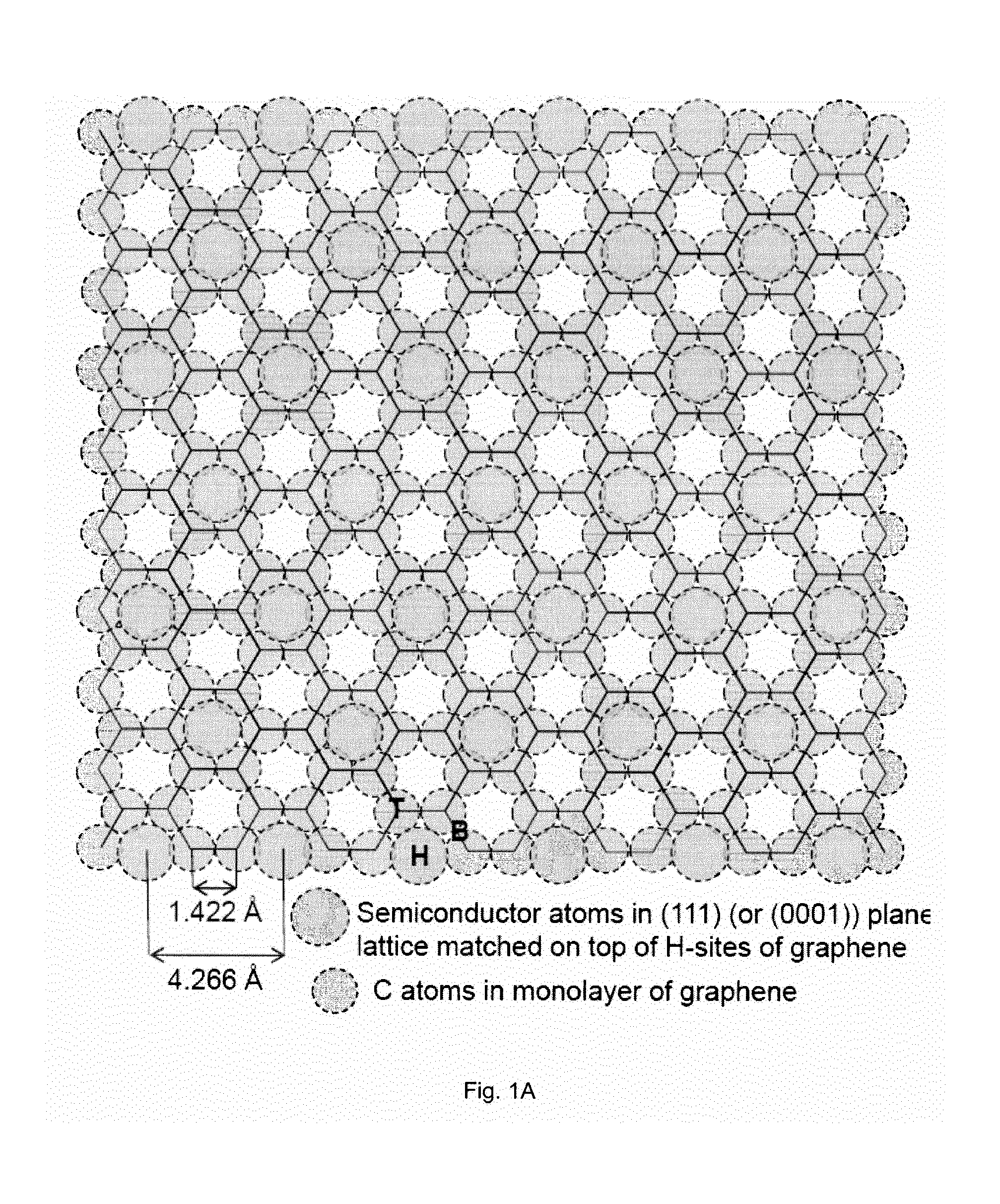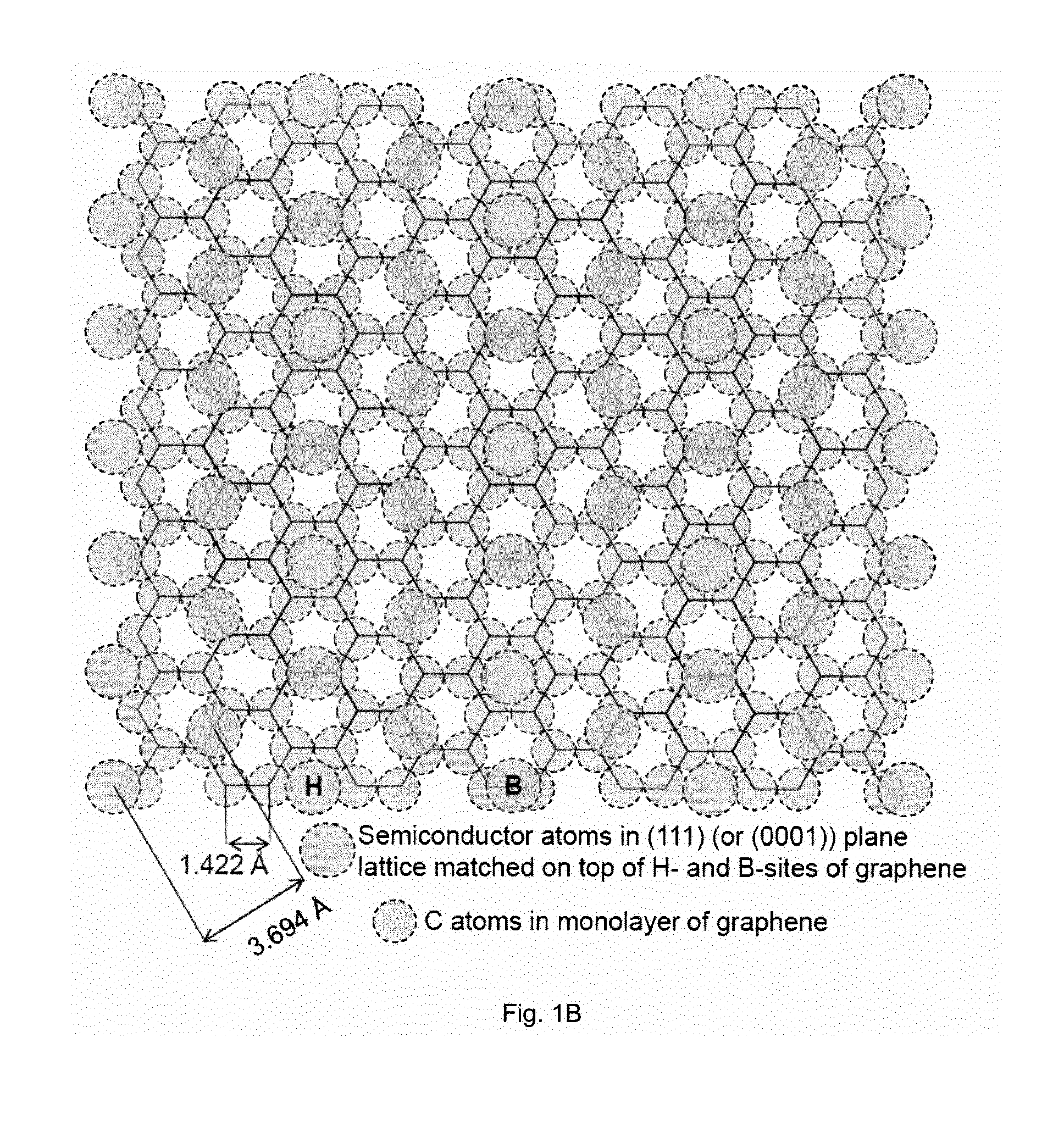Nanowire epitaxy on a graphitic substrate
a graphitic substrate and nanowire technology, applied in the field of nanowire epitaxy on graphitic substrates, can solve the problems of limiting the growth of nanowires on matching substrates, high cost and limitation, and inability to carry nanowires on gaas substrates, etc., to achieve the effect of enhancing the epitaxial growth of nanowires
- Summary
- Abstract
- Description
- Claims
- Application Information
AI Technical Summary
Benefits of technology
Problems solved by technology
Method used
Image
Examples
example 1
Experimental Procedure
[0130]Nanowires (NWs) were grown in a Varian Gen II Modular molecular beam epitaxy (MBE) system equipped with a Ga dual filament cell, an In SUMO dual filament cell, and an As valved cracker cell, allowing to fix the proportion of dimers and tetramers. In the present study, the major species of arsenic were As4. Growth of NWs is performed either on a Kish graphite flake or on a graphene film (1 to 7 monolayers thick) grown by a chemical vapor deposition (CVD) technique directly on a Ni film deposited on an oxidized silicon wafer. The CVD graphene films were bought from “Graphene Supermarket”, USA. The samples were prepared using two different procedures. In the first procedure, the samples were cleaned by iso-propanol followed by a blow dry with nitrogen, and then In-bonded to the silicon wafer. In the second procedure, a ˜30 nm thick SiO2 layer was deposited in an e-beam evaporator chamber on the samples prepared using the first procedure where after holes of ...
PUM
 Login to View More
Login to View More Abstract
Description
Claims
Application Information
 Login to View More
Login to View More - R&D
- Intellectual Property
- Life Sciences
- Materials
- Tech Scout
- Unparalleled Data Quality
- Higher Quality Content
- 60% Fewer Hallucinations
Browse by: Latest US Patents, China's latest patents, Technical Efficacy Thesaurus, Application Domain, Technology Topic, Popular Technical Reports.
© 2025 PatSnap. All rights reserved.Legal|Privacy policy|Modern Slavery Act Transparency Statement|Sitemap|About US| Contact US: help@patsnap.com



